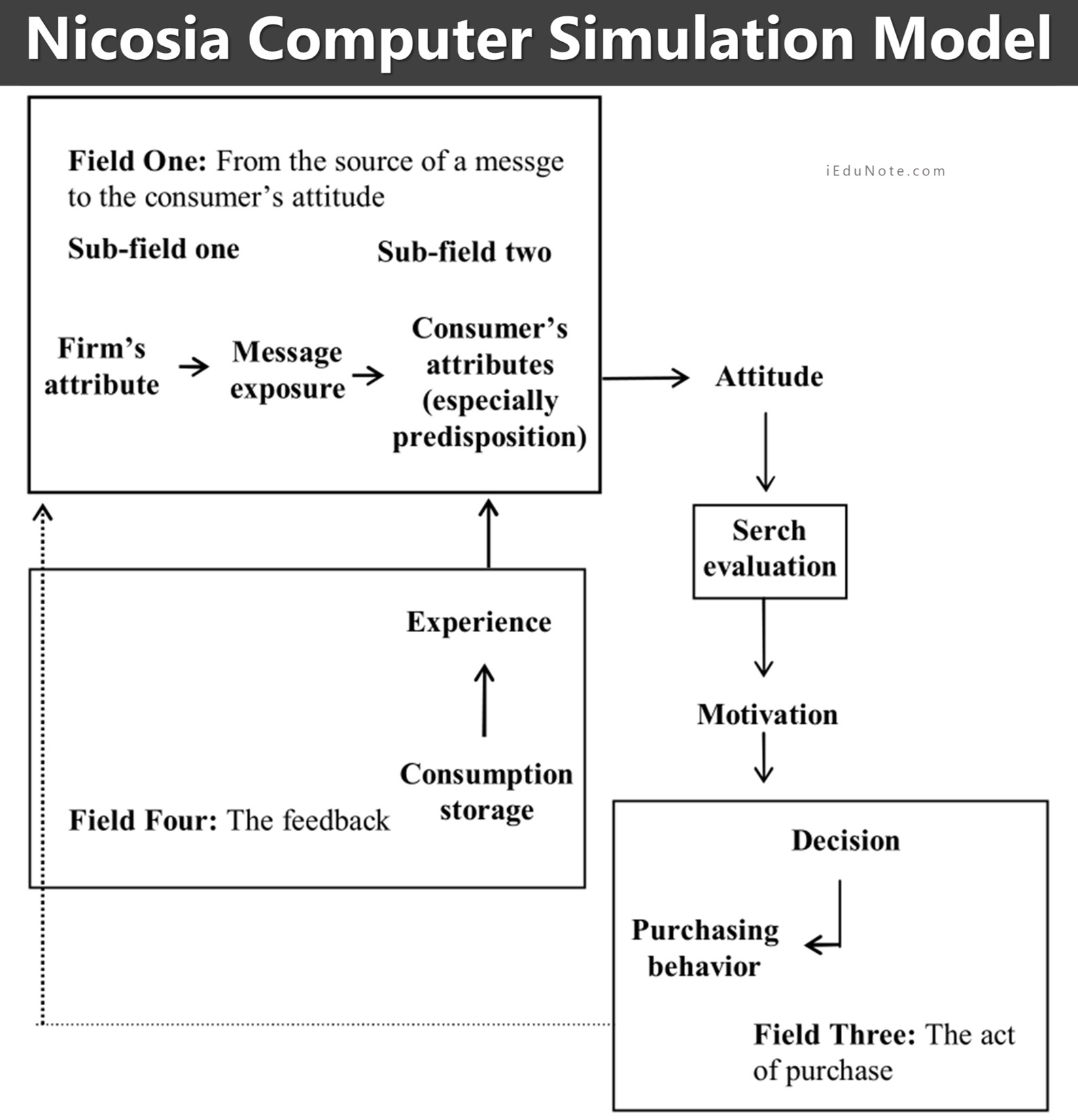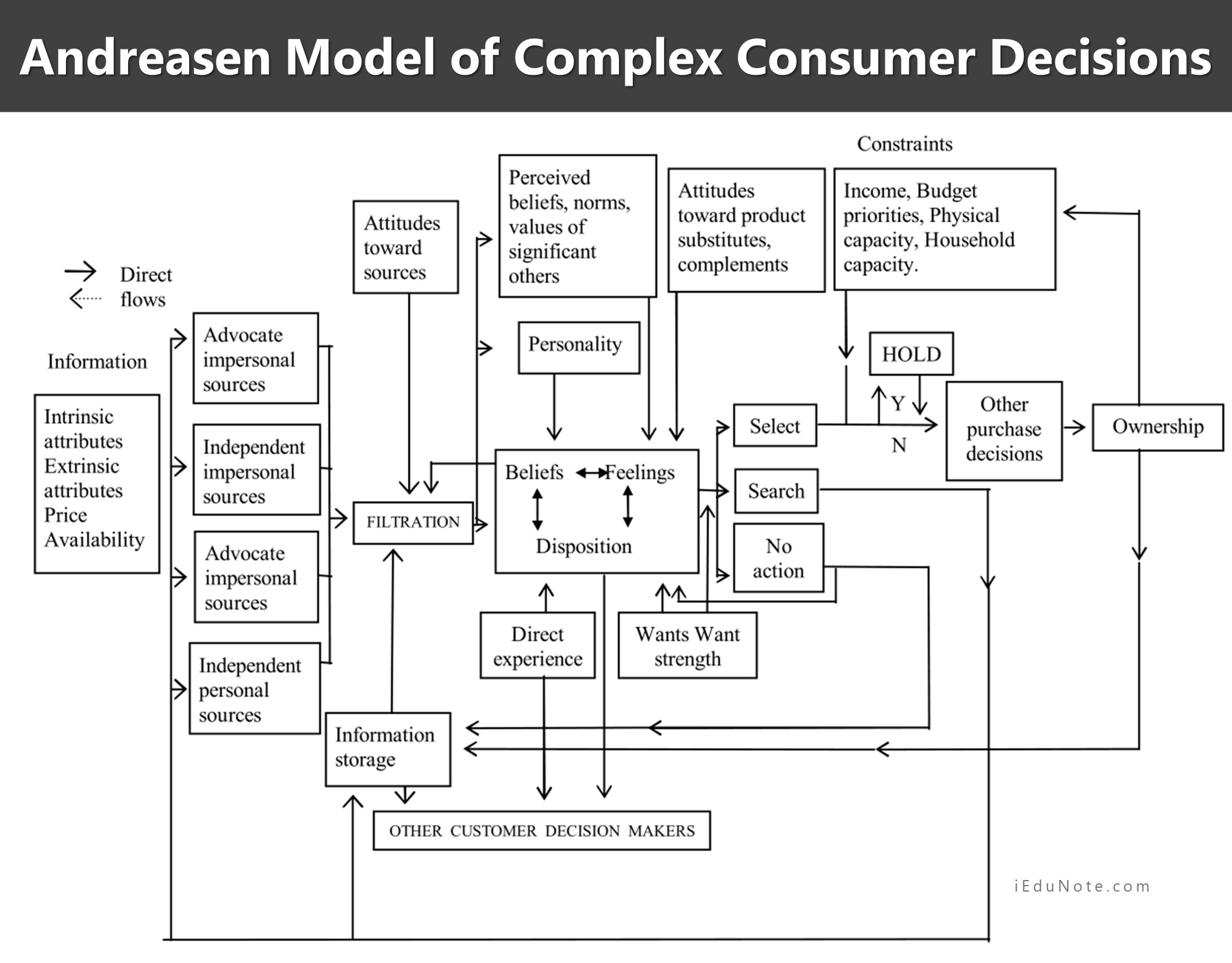The buying process can be examined in great detail, although the buyer operates as a whole person. Throughout the buying process, there is some planning, handling risk, reacting to habit and confidence in sellers, and registering satisfaction upon purchase. Models of buying behavior are useful in developing an understanding of the buying process.
Nicosia Computer Simulation Model
Francesco M. Nicosia has developed this model. This model is particularly used to simulate behavior electronically. According to Mr. Nicosia, a consumer’s decision can best be understood by a flow chart diagram. Nicosia uses a computer flowcharting technique to show the various forces involved and the relationship of those forces.
By stating specific variables and their general interdependencies, it (the model) offers the necessary guidelines for data collection and the technical bases for experimental simulations of the psychological, social, and economic processes it describes and the possible reactions of these processes to different advertising policies.
It also offers the necessary background for qualified interpretations of the results of experimental simulations.
The basic structure of the model is shown in the figure drawn on the next page. According to this model, the firm affects the consumer, the consumer affects the firm, and the consumer’s behavior affects their behavior in the future. There is no real beginning or end.
The model is set up into four basic fields. Field one includes all processes which take a message from the firm to the consumer. Subfield one shows the flow of an advertising message to the consumer. (A new product is assumed in this model).
Subfield two shows the merging of the advertising message with the person’s psychological attributes. Field two includes immediate responses to the message.
Coming from subfield two is an attitude toward the product that flows into field two where a search and an evaluation may be made. The consumer forms an attitude, evaluates alternatives, and then is ready to enter the action phase of the model.
In infield three, the consumer develops a motivation to act and then acts. If the consumer is motivated to buy the product, the actual purchase occurs in field three.
Field four includes feedback linkages, which takes place after the purchase.
For instance, the act of purchasing is fed back into the firm as a stimulus. Also, there is feedback within the consumer as the consumer goes through storing and using the product. This experience then alters the consumer’s attributes, such as self-concept, learning processes, personality, etc.

The Nicosia model has several strengths. First, the model recognizes the many steps which lie between attitude formation and actual behavior. Such a conceptualization helps us understand the problems researchers have when they find that attitudes do not always predict behavior.
The model, however, does not present problems when used to make predictions. The linkages shown in the diagram indicate flows rather than causation.
The model is strong in showing the change in consumer attributes due to considering, choosing, purchasing, and using a product. There is intra-person feedback, i.e., consumers think of themselves and respond to their thoughts and acts.
However, the model is not very explicit in describing how and when the consumers’ or firms’ attributes function. To be truly explanatory, the model needs more elaboration on this point.

